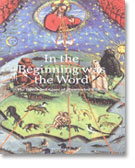Let there be light
In the beginning was the word, and in the Middle Ages was the zenith of the Bible. It was a time when bibles were commissioned by kings, princes, and high-ranking members of the Curia, whose wealth and influence begat ornately illustrated bibles of extraordinary craftsmanship. To mark the Year of the Bible, and in conjunction with the Austrian National Library’s exhibition of its most precious sacred manuscripts, TASCHEN is publishing this book that will make the finest of these illuminated manuscripts accessible to the general public. The Power and Glory of Illuminated Bibles covers examples from every epoch of the Middle Ages, presenting the Bible as it was visualized in both theological and historical contexts. As the beauty and significance of the illustrations are undeniable, the manuscripts are also examined from an art historical point of view. Texts by Andreas Fingernagel, Stephan Fussel, Christian Gastgeber, and a team of 15 scientific authors describe each manuscript in detail and explore the evolution of the Bible as well as the medieval understanding of history that is inherent in these versions of the Bible; also included is a glossary of important terms so that those not versed in bible history can enjoy the texts as well. This sumptuous publication of these rare and significant manuscripts?reproduced with the impeccable quality and modest price tag for which TASCHEN is known?is a truly divine event.
In the beginning was the word, and in the Middle Ages was the zenith of the Bible. It was a time when bibles were commissioned by kings, princes, and high-ranking members of the Curia, whose wealth and influence begat ornately illustrated bibles of extraordinary craftsmanship. To mark the Year of the Bible, and in conjunction with the Austrian National Library’s exhibition of its most precious sacred manuscripts, TASCHEN is publishing this book that will make the finest of these illuminated manuscripts accessible to the general public. The Power and Glory of Illuminated Bibles covers examples from every epoch of the Middle Ages, presenting the Bible as it was visualized in both theological and historical contexts. As the beauty and significance of the illustrations are undeniable, the manuscripts are also examined from an art historical point of view. Texts by Andreas Fingernagel, Stephan Fussel, Christian Gastgeber, and a team of 15 scientific authors describe each manuscript in detail and explore the evolution of the Bible as well as the medieval understanding of history that is inherent in these versions of the Bible; also included is a glossary of important terms so that those not versed in bible history can enjoy the texts as well. This sumptuous publication of these rare and significant manuscripts?reproduced with the impeccable quality and modest price tag for which TASCHEN is known?is a truly divine event.
The authors:
Andreas Fingernagel (Ed.) studied art history and archaeology in Salzburg and Vienna. From 1985 to 1989, he worked in the Manuscripts Department of the Staatsbibliothek Preussischer Kulturbesitz, Berlin, and later took part in research relating to the cataloguing of medieval manuscripts in Vienna’s Austrian National Library. He teaches at the University of Vienna.
Christian Gastgeber studied classics and Byzantine studies at the University of Vienna. After receiving his doctorate in 2002, he joined the staff of the Byzantine Section of the Austrian Academy of Sciences, Vienna, specialising in Greek palaeography and diplomatics. He is editor-in-chief of Biblos, a periodical for the history of books, libraries, script, and typography issued by the Austrian National Library in Vienna.
Stephan Fussel is director of the Institute of the History of the Book at the Johannes Gutenberg University of Mainz, and holder of the Gutenberg Chair at the same university. He has published widely on early printing, on bookselling and publishing from the 18th to the 20th century, and on the future of communications. Fussel is also the editor of TASCHEN’s Chronicle of the World and Luther Bible.
Andreas Fingernagel (Ed.) studied art history and archaeology in Salzburg and Vienna. From 1985 to 1989, he worked in the Manuscripts Department of the Staatsbibliothek Preussischer Kulturbesitz, Berlin, and later took part in research relating to the cataloguing of medieval manuscripts in Vienna’s Austrian National Library. He teaches at the University of Vienna.
Christian Gastgeber studied classics and Byzantine studies at the University of Vienna. After receiving his doctorate in 2002, he joined the staff of the Byzantine Section of the Austrian Academy of Sciences, Vienna, specialising in Greek palaeography and diplomatics. He is editor-in-chief of Biblos, a periodical for the history of books, libraries, script, and typography issued by the Austrian National Library in Vienna.
Stephan Fussel is director of the Institute of the History of the Book at the Johannes Gutenberg University of Mainz, and holder of the Gutenberg Chair at the same university. He has published widely on early printing, on bookselling and publishing from the 18th to the 20th century, and on the future of communications. Fussel is also the editor of TASCHEN’s Chronicle of the World and Luther Bible.
 |













